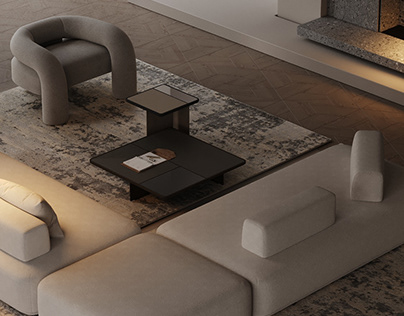www.fastcompany.com
Humility is one of those traits everyone claims to love, but few actually want to practice. In other words, we love interacting with humble people, more than making the effort to come across as humble with others.The reasons for this are well-documented by science, and boil down to:Humans are generally prone to overestimating their skills and abilities, and thinking more highly of themselves than they shouldWe are afraid that exposing our limitations and self-doubt (assuming we are capable of self-awareness in the first place) may weaken our reputation with othersThere is a temptation to brag or show off in order to persuade others that we are talented even when we are notpeople often mistake confidence with competenceAnd yet, there is both a high cost to being perceived as arrogant (when your displays of confidence exceed or surpass your apparent competence), as well as substantial benefits to being perceived as humble (when your actual abilities seem to surpass your self-perceived or self-reported abilities).Research shows that humble people are seen as more trustworthy, better team players, and even more effective leaders. Thats reason enough to consider toning down the self-promotioneven if your inner ego is doing push-ups in the mirror.Importantly, what matters most is not what you think of yourself, but what others think of you: for instance, we all get hired, fired, promoted, and demoted based not on our self-views, but those of others.So, no matter how much you love yourself and your talents, you should consider the multiple upsides to coming across as humble, even if it means fake in it strategically. Here are some tips on how to do this:Master the Art of Self-DeprecationHumor is your best friend here. Casually drop self-deprecating remarks like, Oh, I had no idea what I was doing at first, when someone praises your work. Bonus points if you roll your eyes for comedic effect. But beware: Overdoing it makes people think youre fishing for compliments. Keep it subtle, like adding saltnot dumping the shaker.Why it works:Studies suggest that self-deprecating humor makes people appear more likable and approachable. Translation? Crack the right joke, especially with yourself as the target of your joke, and people will forget or ignore how much you love yourself.Play the curious newbie cardEven if youve been doing something for years, act like youre still learning. Say things like, Id love to hear how youd approach this, or, What would you do differently? This doesnt mean you actually have to take their advice, of course.Why it works:Humble people are seen as more open to learning, which is a highly attractive quality (source). Indeed, because being in learning mode is the opposite of being in performance mode, you will likely project a humble image when you display curiosity and a hungry mind.Downplay your success without humblebraggingTheres a fine line between Oh, it was nothing and Ugh, I cant believe I have to accept another award! To avoid looking insufferable, acknowledge praise but pivot quickly: Thanks! The whole team made it happen.Why it works:Studies on modesty reveal that sharing credit makes you seem more collaborative. Plus, you get bonus points for being a team player, even if you secretly know you carried the whole thing. Consider that many managers and leaders, including those who succeed in corporate environments, specialize in playing the credit and blame game, so they take credit for other peoples work and blame them for their own mistakes. It is advisable to do exactly the opposite, and you will be admired for your humility.Praise others (even when youre dying to take credit)Want to look humble? Shower others with sincere compliments. You were amazing during that pitch! or Your input made all the difference. Even if you did the heavy lifting, let someone else bask in the spotlight for a change.Why it works:Complimenting others increases likability. And when you make others feel good, theyre less likely to notice your secret thirst for glory. Just focusing on others rather than on yourself will likely create a reputation for being humble, because there is a fundamental tension between putting yourself at the center of the universe, or ignoring others altogether. As the saying goes, humility is not thinking less of yourselfits thinking of yourself less.Listen, listen, listen (it will help you to shut up)Despite the common misconception that those who speak often, tend to have interesting or important things to say, the inability to shut up signals mostly poor social skills, a disinterest in others, and indeed self-importance (which is the opposite of humility). Resist the urge to hijack the conversation with, oh, that reminds me of when I . . .; and the temptation to think that everyone is desperate to hear your unsolicited views and opinions.Why it works:Active listening signals humility and respect. It also keeps you from blurting out that story about how you saved the day (again). Human beings have a pervasive interest in themselves, especially relative to others, which highlights the opportunity: instead of competing for attention with others, pay attention to themand if they are not interesting, at least pretend. Unsurprisingly, scientific studies show that listening is a sought-after skill, and an underrated dimension of career potential.Admit small flaws strategicallyWe are generally too busy thinking about how we can impress others to showcase our vulnerabilities, but this is one of the best ways to cultivate a humble image. You can avoid this by dropping minor confessions like, I totally forgot about that deadline last weekthank goodness for my reminders! This humanizes you without damaging your credibility. Just dont overshare to the point where people start wondering why youre still employed, or whether you have severe imposter syndrome.Why it works:Research shows that owning up to mistakes makes you seem relatable and trustworthy. It will help you to connect with others by displaying your vulnerabilities, which creates a reputation for being real, genuine, and human, all of which is valued by others.In short, pretending to be humble doesnt make you a fraudit makes you smart, provided you have the emotional and social intelligence to pull it off. Actually, just trying to manage impressions by displaying a humble or modest version of your persona, and ensuring that your public self is as likable as possible, is indicative of a high EQ. By strategically toning down your ego, you can unlock multiple benefits, such as stronger relationships, greater influence, and less annoyed coworkers. To be sure, if you fake humility long enough, it will become not only a habit, but a distinct feature of your reputation and personality: It is much better to think of yourself as arrogant when everyone sees you as humble, than the other way around.












